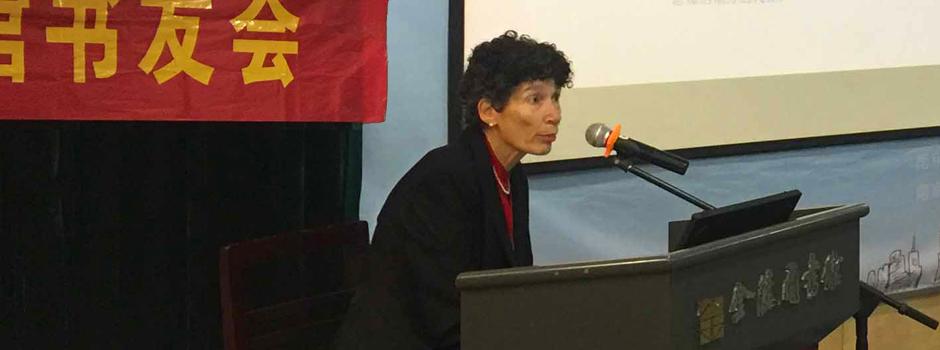On October 28, Provost Joanna Waley-Cohen discussed a number of well known foreign visitors -- including Jesuit missionary Matteo Ricci and Dutch artist Jan Nieuwhof -- and their impressions of Nanjing, in a talk titled Western Perspectives on Nanjing, 16th to early 20th century at Nanjing Jinlin Library.
"The air is fresh, the temperature is great, the land is fertile,” said Ricci of Nanjing, a city often portrayed by westerners as a classic “symbol of China,” dating back to the 16th century. Famous for its mountains and lakes, architecture and art, and for being a thriving center for manufacturing and business, Nanjing is also known for the “Treaty of Nanking” signed by the First Opium War. By the middle of the 19th century, the Taiping Heavenly Kingdom movement made it reenter into the international perspective.
Waley-Cohen emphasized the Nanjing Massacre, tracing the stories of Mr. John Rabe and Ms. Minnie Vautrin, westerners who provided asylum to refugees.
According to Waley-Cohen, western attitudes about the city have been ‘changing like a pendulum’ over the past four centuries, shifting from an almost uncritical admiration of the city to a disparaging view, then having a strong desire for possession to a deep sympathy post-massacre.
"The only thing that never changes is that since the end of the 16th century, Nanjing has always been standing in the eye of the westerners who care about it."


